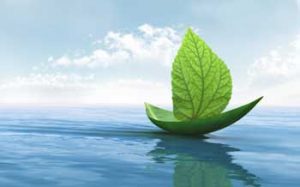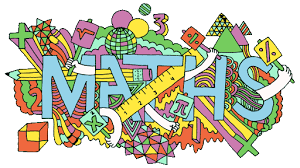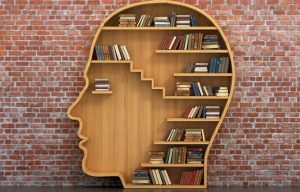 Hello Everyone!
Hello Everyone!
I can’t believe we are already in October! We have been doing a lot of learning for our first unit on the concept of SYSTEMS, and here is a quick update according to subject area:
Socials/Science/LA:
As our unit progresses, we are learning curricular competencies around inquiry and research that will serve us well during our independent projects later in the year!
Using the wonderings board in the classroom, and the prompts that Ms. D likes to call the “jar of inquiry,” we are learning how to ask deeper questions. We have a variety of great questions already posted on the board. Students have been encouraged in their e-ports to take one of those questions and do further research, which can be posted in a new e-port entry. Ms. D and Ms. B will also look at the questions to inform discussions in class. The best research starts with well-thought-out questions!
As we learn about the personal choices we make that help the human body, or as we do research for projects on organs and diseases, we are also learning how to take notes, how to watch videos and write down key ideas or vocabulary, how to document our resources, and how to choose appropriate websites. Ms. D and Ms. B have also chosen a variety of websites for students to use, and there are boxes of unit-related books in the classroom from our Suncrest and District libraries.
Finally, we are learning about time-management and communication skills as we try to use our time effectively during class, use alternative spaces to work so we aren’t distracted, take breaks independently (because this helps us to focus), use fidgets to help with sensory movement needs, and communicate to others, both peers and the teachers, about our needs.
Almost everyone has finished their rough draft of the Human Body Corporation letter, having done research on one organ and writing a business letter to prove why their organ is essential and should not be fired! We went over the basics of paragraph writing, and Ms. D wrote a business letter together with the class on the projector, so we all understood how to break up our thoughts into at least 3 paragraphs. Our goal is to work on adding descriptive words, more complex structure, and transition words to our writing during our upcoming writing activities with Ms. B. Everyone is also typing their letter, learning how to access One Drive and to share documents with teachers on that system. All letters will be done by Thursday, October 10th.
We also started our conversations about microbes and pathogens by watching a cool demonstration online to better understand the size of the tiny organisms that can make us sick. You can view this at home. We also talked about the different kinds of cells of our body, the parts of cells, and the genetic information in our cells. Next week? A strawberry DNA experiment and talk about scientific lab procedures.
We are all looking forward to our field trip on Friday, October 11th to Science World! Please do show up on time that day so we can load the buses promptly at 8:50 AM. We will be attending a Digestion Show in the middle theatre, then an IMAX “Human Body” video, having lunch, and then going through the general exhibits for an hour in small groups. Please don’t bring backpacks — only a lunch bag with a name on it. You will need lunch, as there isn’t time to purchase food there. We will leave at 2PM and be back to the school no later than 2:45. Thank you to our parent volunteers who are coming with us!
Science, Mindfulness, Physical Education, Health!
Ms. B discussed the structure of the brain with students this week, and everyone made brain skits to present in small groups that explained how the parts of the brain work together. We had discussions about how being mindful and breathing deeply has been shown, scientifically, to improve the connections in the brain. We are doing some activities from the Mind Up program, which teach about brain health and self-regulation strategies. This coming week, we will continue with more research about what the brain needs for maximum performance!
We also did some learning outside, taking some time for independent, mindful thinking in the natural environment surrounding our school, such as Rumble Park. Please make sure you bring a sweater or jacket each day, so you are prepared for any kind of weather, as we may go outside rain or shine for activities! We will be discussing all of the positive things we can do to improve our own personal mental health, which is an important part of our Physical and Health Education curriculum.
In gym, we are doing activities related to strength, reaction time, and endurance, and we have also discussed how doing gym means getting your heart rate up! To that end, we want to make sure that if we are playing games, we choose ones that will help us with heart health! This last week, we did a lot of sprints, discussed different ways to stretch safely, participated in group strength activities, and played virus tag in relation to our classroom discussions on microbes and pathogens. Ms. D challenged everyone to think of how we could adapt virus tag to make it even more active and fun!
Please look for a letter coming to you soon about our walking field trip to Central Park on Friday, October 18th! We will be doing a variety of nature activities and getting some great exercise outdoors.
ADST and Systems!
Last week, Ms. D introduced everyone to a new thing she learned about last Spring called Scrappy Circuits! First, we discussed the system of electricity using the Universal Systems Model. We talked about how a battery works, including that it involves a chemical reaction in the battery between a metal plate and the acids inside. Then, we pretended to be a circuit and passed paper electrons around to a student pretending to be the “lightbulb” so we could understand how circuits work! After we had the basic idea, we then built our own circuits.
To do this, we made “bricks” out of cardboard that become components of the circuit. First, we made a battery brick out of cardboard, an LED, and 3 clips. Then, we made a light brick using an LED and 2 clips. Then, we made aluminum foil connectors between those bricks or used alligator clips, to make the bulb light up! It was challenging, because we had to use a lot of patience, fine-motor skills, and problem-solving to get our circuits working consistently. If you want to do more of the bricks, you can go online to Scrappy Circuits, as everything can be made with simple items at home or at the dollar store. You can also follow their group on Twitter: @ScrappyCircuits. Ms. D is following them, so you may see them on my list!
Art and Systems:
We have begun a longer art project to create our own PERSONAL HIVES. What are the things that help you to thrive? Who are the supportive people in your life? What passions keep you going? What places or environments help you to be the person you want to be? As part of our discussions around the core competencies of personal awareness and critical thinking, we are making a small hive of hexagons to display that represent, through mixed media, the important supports in our lives that keep our hive humming! If you want to bring any supplies from home that would add to your art, please do! We have tons of mixed media materials to choose from in the classroom, as well.
French and Systems:
We began going over the French vocabulary for parts of the body and played Simon Says in class. This involved learning the words for your and my, as well as the articles associated with each French noun. Please do practice your French at home to become more familiar with the words. We will be using a variety of resources, including handouts, online websites, songs, and dialogues to help us learn French associated with the human body. As we practice with websites, we will post them on the blog so you can use them at home.
Math and Systems:
Most everyone understands the basics behind probability now, and we are familiar with vocabulary that describes the probability of different situations such as likely, impossible, or certain. We have been collecting data about our genetic traits, games we like, and other personal details, and analyzing that data by creating graphs and finding mean/median/mode/range. We did a great activity using a ruler and dice to discuss median, and we have looked at several graphs online related to a variety of subjects, including Canadian Government, as we prepare for our Student Vote on October 16th.
We are working from a variety of resources, rather than just one textbook, given the many levels of math knowledge in the class, as well as our need to integrate math into the unit in a meaningful way. One of those resources is Probability and Statistics for Middle Grades. We will have handouts in class for further practice, such as the one we distributed Friday on reading graphs for information, which involves reading problems carefully, understanding vocabulary about data discussed in class, and using basic operations to answer questions about the data. We will be asking students to use these data analysis skills frequently, whether discussing brain science, creating their own surveys, or doing scientific experiments about germs in the school!
Other Upcoming Things and Dates:
ALL OCTOBER: FSA Testing for Grade 4 students during class time
October 11, Field Trip to Science World All Day
October 16, Student Vote
October 17, Math Games Night 6:30 – 7:30 PM (Ms. D is looking for volunteers to run game stations!)
October 18, Walk to Central Park 10:00 AM – 1:00 PM
October 21-24, Scholastic Book Fair in the Library
October 21 VOTE! 🙂
October 22 Photo Day
October 25 Pro-D Day, No School
October 29 Pumpkin Patch — bring a plastic bag to school!
October 31 Halloween Pumpkin Carving, Costume Parade, Class Party
November 8 Remembrance Day Assembly
November 11 Remembrance Day, No School
Report Card 20-30 minute conferences between student, teacher, and parent — Dec. 2-6, stay tuned for letter in mid November
MUSICAL — last week before we go to holiday break
Stay tuned for more information about November!
Kindly,
Ms. D and Ms. B



